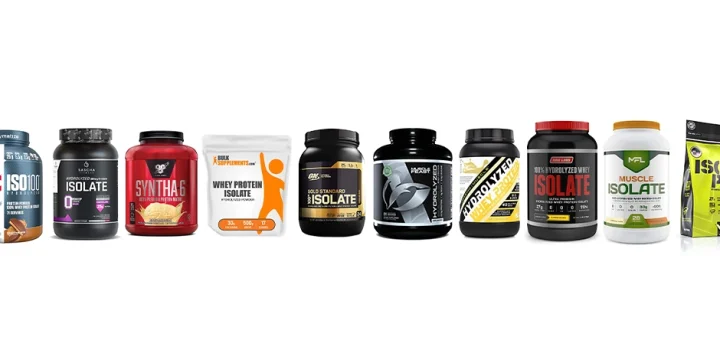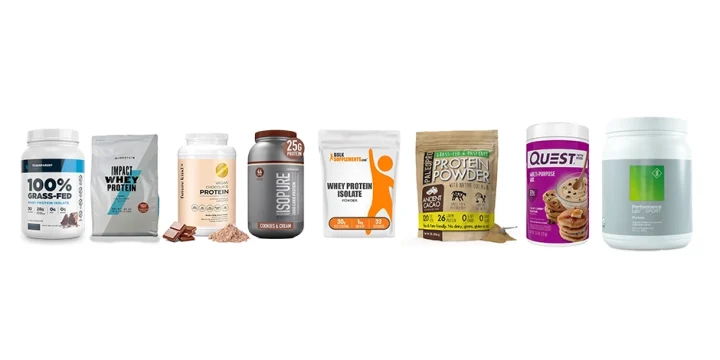This is a question quite a few of my clients ask me, and in most cases, I tell them to stick with the protein formula they buy. But there are times when you might want to mix protein powders to achieve better results.
But before you simply order a few random protein shakes and come up with your own blend, let me show you what I learned from my nutritionist.
As a personal trainer, I think this is important information that I share with my clients to help them succeed.
There are a few simple mistakes people seem to make, especially when it comes to some plant-based proteins.
Quick Summary
- It is safe to mix different types of protein powders without experiencing any digestive or body reaction.
- The advantages of mixing different types of protein powders are adding different flavors and addressing the body's different amino acid needs.
- When mixing two protein powders, you can mix 30 grams of whey protein isolate (90% protein) with 10 grams of casein protein (80% protein) to create a blend that provides 35 grams of protein with a balanced amino acid profile.
- Drawing from my experience, mixing pea, rice, and soy protein powders can provide better amino acid exposure for improved recovery times.
Is It Safe To Mix Protein Powders?

Yes, it's generally safe to mix protein powders, and you shouldn't find that it causes any major issues for your body or digestive system.
Based on my first-hand experience as a personal trainer, mixing proteins is similar to combining different protein sources in a meal.
If you had a breakfast of oatmeal with milk, scrambled eggs, and a few chicken strips, then you'd be combining multiple different protein sources.
The same would be the case if you had a glass of soy milk to wash down a lunch of rice with beans and peas.
The only thing I would suggest is to be careful not to take a huge amount of protein powder by adding a full scoop from multiple different tubs. Unless your stomach is used to a large protein supply, you might feel bloated.
2 Advantages of Mixing Protein Powders

There are two main advantages that I find you get from mixing two or more protein powders.
Adding Flavor
First of all, if you have found a great quality powder, but you simply aren't a fan of the flavor, then you can mix it with a different one.
One of my clients does this with an unflavored Optimum Nutrition product that he mixes with a Transparent Labs chocolate protein powder.
Different Amino Acid Needs
According to a study published by American Physiological Society (APS), a more significant rationale for doing this is that the average adult possesses specific requirements for particular amino acids [1]. But an athlete will require some proteins more than others.
And when you look at the majority of plant-based proteins, you actually need to mix different ones to get the full amino acid profile from your protein intake.
2 Disadvantages Of Mixing Protein Powders

There are also two occurrences that usually make people stay clear of mixing protein powders and miss all the benefits of the process.
Blending Inconsistency
The biggest disadvantage I have encountered with protein powders is that some of them mix easier than others. Some protein powders will quickly dissolve in water, while others require a blender. And when you mix them into one protein shake, you can end up with a weird consistency.
Difficulty Setting the Protein Profile Right
The other thing I would highlight is that when you try to create your own mix of different types, you might not end up with the ideal daily protein intake to support growing lean muscle mass.
Unless you get the amino acid profile just right, you could end up further away from your fitness goals. And with some types of protein being slow-digesting, you could end up with less than optimal recovery times.
What Types Of Protein Should You Mix?
Based on a study published by the National Institutes of Health (NIH), there are different types of protein that people can mix and combine in their diet. These include animal protein sources such as casein and whey, as well as vegetable sources such as soy [2].
And for those that are lactose intolerant or vegan, whey and casein protein intake isn't an option.
What I would suggest in this case is to combine pea, rice, and soy protein powder into one shake. With the same protein intake volume of, say, 25 grams, you'll get a much better amino acid exposure to maximize recovery times.
"According to this research, which focused on how much protein athletes need and when they need it, you should consume 0.54-0.91g per pound of bodyweight daily."
- Runnersworld.com
FAQs
What Should You Not MIX With Protein Powder?
One thing you should avoid mixing with protein powder is any form of artificial flavor or sweetener. The reason is that many chemical sweeteners may impact your gut health, and that will make digesting protein shakes more difficult.
What Is the Best Way to Mix Protein Powders?
The best way to mix different protein powders is to add them to water in a shaker. Depending on your personal preference, that should give the protein shakes a smoother consistency and make them more enjoyable to drink.
References:
- https://journals.physiology.org/doi/full/10.1152/ajpendo.00466.2001
- www.ncbi.nlm.nih.gov/pmc/articles/PMC3905294/
About The Author
You May Also Like






